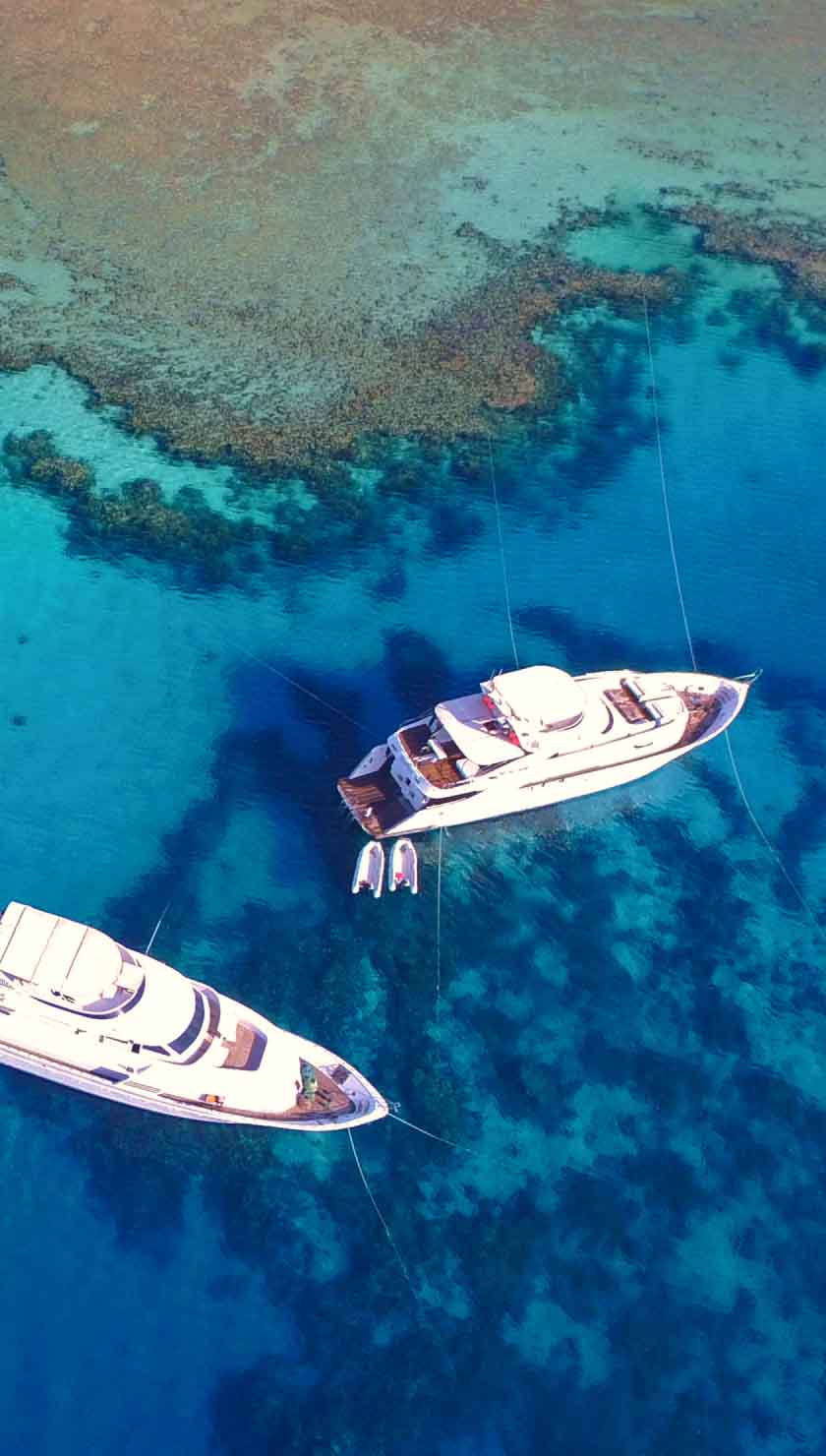Liveaboard Dive Trips In Polynesia
If your liveaboard concentrates on the Tuamotu archipelago, you’ll spend your seven or ten night itinerary on either a traverse between Rangiroa and Fakarava or on a concentrated exploration of Fakarava’s UNESCO Biosphere Reserve. SCUBA diving in Polynesia is also well represented by the Marquesas Island group, another luxury liveaboard destination. Any liveaboard in Polynesia will make sure you get to relax and stroll on the local islands’ perfect beaches, while your accommodation and conveniences are provided on a multi-deck motor yacht.
Dive Sites & Areas of Polynesia
Within the Tuamotu Islands, Rangiroa might be the most well-known atoll. It’s actually one of the largest atolls in the world, at 170 square kilometres, with around 2500 inhabitants, famous pearl farms, and even a local winery. Underwater, the Tiputa Pass gives Rangiroa its claim to fame. As one of the two channels into the atolls, Tiputa gets washed by a forceful current during the incoming tide… which give divers the chance to see huge schools of grey reef sharks, occasional tiger sharks and hammerhead sharks, mantas, Napoleon wrasse, and other reef fish. Bottlenose dolphins present a spectacular sight when they hang out at the channel entrance with the other marine life.
Fakarava atoll is so stunning that some French Polynesia liveaboards spend their entire itinerary in its vicinity. Garaue Pass, the northernmost channel, is the best location in the entire Tuamotu Archipelago to see sharks. Some Polynesia liveaboards term the mass of grey reef sharks a “shark wall,” and you’re liable to see any other of the big species on your list, from tiger sharks to manta rays. In fact, numerous manta ray cleaning stations can be found within Fakarava, as well as some shallower reef dives with healthy hard coral cover. At 1600 meters wide, Garaue receives such strong currents that slack tide is the only safe time to dive- a dramatic fact for one of the most dramatic marine life encounters you may ever have.
Apataki, Tikehau, and Kauehi offer more diving of top-notch quality. More sharks in big schools more huge schools of snapper, more Napoleon wrasse. Most of the topography conforms to the usual walls and channels of French Polynesia’s dive sites, but The Shark Hole in Tikehau sports a vertical chasm and an archway adorned with anemones. Tikehau also offers an old pearl farm where mantas can be seen regularly and in abundance. One of the best walls for huge hard corals and sponges is at Outer Wall in Kauehi, an island which also lays claim to an underwater cliff face dropping down to 1500 meters! There are pristine corals at Pakaka Pass in Apataki.
When To Go
SCUBA diving in French Polynesia is possible all year round. January through March are the warmest, most humid months, with a water temperature of around 28 degrees Celsius. It’s drier from July through November, with a water temperature of around 24 degrees. Humpback whales can be seen during the colder season, as well as spawning Marbled Groupers (in June and July).
Tips For Travellers
The local currency in French Polynesia is the French Pacific Franc. It’s recommended that you bring money from your home country to exchange at the international airport in Pape’ete, Tahiti. There are exchange offices on big islands like Tahiti and Bora Bora, as well as ATMs. However, once you reach remote islands in the best liveaboard diving locations, you’ll be hard-pressed to find a working ATM, and there are no exchange offices. Most nationalities receive a 90-day stay visa-free; just make sure your passport has three to six months remaining validity at your date of entry. For your electronics, you should note that French Polynesia runs voltage of 110/220 V, frequency of 50-60 Hz, and has plug outlets type A, B, E.
How To Get There & Ports Of Departure
There is only one international airport- Fa’a’a airport in the capital Pape’ete on Tahiti island. If your liveaboard is not departing from the Pape’ete Port, you can take a domestic flight to other departure locations. Rangiroa and Fakarava are both ports of departure for many Polynesia liveaboards. The flight to Fakarava Airport or Quai D’Ohotu Airport (on Rangiroa) takes only an hour.
Considerations
Luxury liveaboards in Polynesia range from 500 to 700 euros per night, and marine park fees apply to certain destinations in Fakarava and other islands. Nitrox fees also usually apply on liveaboards, and you should make sure to earn your certification before travelling. It’s also important to have a good amount of diving experience under your belt before booking a liveaboard in Polynesia. Currents through the atolls can be extremely strong, and may require the use of reef hooks. Polynesian authorities have strict regulations for safety in these diving conditions; even if you have a deep diver specialty you are not allowed to go below 30 meters unless you’re a Rescue Diver. Most liveaboards require at least Advanced Open Water certification, sometimes with at least 50 logged dives. Best advice is to check the required experience/qualification needed for the trip before booking.











